
Een prachtverhaal gisteren in The Boston Globe over vis. Het laat zien hoe vis in een mum van tijd kan worden uitgeroeid door er een 'merk' van te maken en er industrieel op te vissen én hoe vis kan worden gekweekt en tot een blijvend succes kan worden gemaakt.
Het is het verhaal van de verdwijning van de zg. Chileense Zeebaars en de opkomst van een kweekvis, die we ook een Nederland kunnen verwachten: de barramundi. Het is een Australisch product en heeft dus net als de Aussie zelf en zijn Cab Sauv een 2 lettergrepig koosnaampje: de "barra".
Commercieel en voedingstechnisch heel interessant, want rijk aan essentiële vetzuren, snel groot en veel mooi wit vlees. Wat wil je nog meer?
Wen er maar vast aan want dit is de toekomst van onze eetvis: wild is uit, kweek is in. The Next Big Fish - Charles P. Pierce | November 26, 2006
This is a story of two fish.
It is an old tale of the price of fame. It is both comedy and tragedy. It begins with a South American dictator. It's a story of plucky fishermen pushed out to sea and into peril. It even has pirates. But, mostly, it is the story of one fish that spent hundreds of placid centuries inoffensively cruising the deepest, coldest waters of the southern sea, down where the great primal engine of the Humboldt Current drives the waters of Antarctica into the southern Pacific, a fish that became so popular that it was sold into virtual extinction. Once upon a time, there was a fish that died of marketing.
More than 30 years ago, Chilean dictator Augusto Pinochet, in a frenzy of deregulation, threw open his country's territorial waters to foreign factory fishing, which not only decimated the local supplies of cod and hake – the fatty, versatile whitefish that are the staples of seafood restaurants everywhere – but also sent Chilean fishermen into deeper and more dangerous waters. Soon, from depths that exceeded 5,000 feet, they began hauling up the Patagonian toothfish, an enormous, hideous creature that had evolved in ways that made it a nearly perfect replacement for the species that had been devastated by factory fishing. For example, because it lacked a swim bladder, the fish had developed a method of using fats secreted directly into its tissues as a means of flotation. Its body was almost all white flesh. The fish was nearly pure foodstuff. All it needed was a spiffy nom de cuisine. Nobody ever would have taken a bite out of something called the Patagonian toothfish. And thus, in 1977, was born the product known as Chilean sea bass.
“It was just this sort of junk fish that they brought up from the depths,” explains Lydia Bergen, the manager of the Sustainable Fisheries Initiative at the New England Aquarium. “The white flesh is really appealing to the US palate. It's not very fishy flavored, but it's oily, so there's almost no way you can overcook it.” Its popularity exploded throughout the 1990s. Around the world, but especially in this country, chefs loved the versatility of the Chilean sea bass. They served it up grilled, broiled, blackened, and steamed to a public that couldn't get enough of it, so much so that unscrupulous chefs began to serve things like black cod under an assumed species. By the end of the decade, Chilean sea bass was the most popular fish in the world. And that was the worst thing that ever happened to it. Once its name was changed, its fate was sealed. And thus did a species perish, the first one ever to die of a brand name.
And then, once upon a time – and a very recent time it was – there was another fish, and this is the happy story of The Next Big Fish, one that has quietly begun appearing on the menus of 25 restaurants in the Boston area alone, including the Legal Sea Foods, Naked Fish, and Skipjack's chains, as well as at the Ritz-Carlton. “It's an interesting fish. It's one of the first farmed white-flesh fish, and it tastes pretty good,” says Legal Sea Foods owner Roger Berkowitz. “I have a preference for wild [fish], but Australia's the only place where they eat this fish wild. A few months ago, we started playing around with it.” The Next Big Fish has already started appearing on Legal's menu, but Berkowitz says he needs the fish to be grown bigger for the restaurant to use it more regularly. “We haven't been able to get enough product of the size we want so far – 4 pounds or bigger – and so we're working with them on that.” By 2007, 40,000 pounds of The Next Big Fish is expected to be shipped each week out to a world that is, well, hungry for it, that is looking, always, for the next big thing, and that usually finds it in the damndest places.
Places like the remotest parts of Australia, say, or the peaceful slopes of the Connecticut River Valley in Western Massachusetts. The autumn light is sharper here, honing itself between the peaks and whetting itself through the branches of the trees until it falls into the swales and valleys in shards as hard as diamonds on the eyes. It comes in bursts as the roads narrow and the towns get smaller, and you have to wait to cross the bridge that leads into Turners Falls so that the bread truck can pass over it first. Across the bridge, then, and through the small-business district, all weathered brick and old handbills, and then off through the trees and the hills again, off through the sharp and glistening light toward where the cutting edge is.
The tanks are round and deep, and they're tucked away under a flat white roof in an industrial park that surrounds the tiny airport, not far from where townspeople say Bill Cosby parks his private aircraft – which is hopefully not called The Pudding Pop. The water in the tanks moves in a constant circular motion, and there is only the faintest stirring beneath the surface until someone takes a small, foul-smelling pellet and tosses it low across the water. There is a sudden, silvery explosion, a loud snap of jaws, and a splash, and then the surface goes flat and still and silent again.
“I'm kind of in love with this fish,” says Josh Goldman, who runs the complex and who has brought the cutting edge to this unlikely place in the valley where The Cos parks his ride. “It does so much of what I am trying to achieve.” The barramundi – which means “fish with big scales” in an aboriginal dialect, or Lates calcarifer, if you're speaking Latin at home – was until very recently merely a feisty game fish hanging on the den walls of people who fish the remote Northern Territory of Australia. An admittedly ugly perch-looking creature, the barramundi is yet another product of the freakish isolation in which animals in Australia evolved. For example, it spawns in the ocean, but it moves easily through the brackish coastal waters and into the long inland stretches of freshwater streams and rivers. Aussie fisherfolk spend good money in pursuit of the barramundi, reeling in specimens in excess of 33 pounds. It also has become the whitefish of choice in Australian restaurants, from fish houses all the way up the scale to what the people in the eating industry call “white-tablecloth restaurants.” In short, it's their cod, and, like the koala and the kangaroo and Aussie-rules football, the “barra” has become one of those unique local phenomena in which Australians take a peculiar provincial pride.
Which only begins to explain how the barramundi came to Western Mass., and how it is very soon going to be coming onto your plate – if it's not already there. It seems that the barramundi is a fish for all seasons. It tastes great, and it's rich in omega-3s, those fishy proteins that are so good for the human brain and the human heart. Moreover, the barramundi turns out to be something of a natural environmental activist, nurtured without antibiotics or hormones in its innate scaly Greenhood by people who went looking for the cutting edge and who brought it to the most unlikely place in order to unleash The Next Big Fish, tasty, healthy, and blessedly guilt-free, on the rest of the world.
The barramundi in the tanks near the airfield are the breeding stock of Australis Aquaculture. The company offices are up the road – at One Australia Way, naturally – in a newer facility that also houses the tanks in which the fish are raised from fry almost to frying pan. It is, in every important sense, a farm. “It isn't logic that drove the domestication of animals,” explains Goldman, the president of Australis. “Humans tried to domesticate everything, and only the good stuff got domesticated. Aquaculture is penalized because most of it has taken place in the scientific era, so you can apply a lot of technology to things that maybe should not be domesticated. If we look more carefully and determine what's a good farm animal – what are the pigs, cows, and chickens of the fish world – we might come up with very different answers.” The science of aquaculture developed swiftly in response to the devastation wrought on the world's wild fisheries. This month, the journal Science published a sobering report in which it was argued that major ocean fisheries will be fished out by mid-century. Because it developed so fast, aquaculture also contributed in its own way to the general devastation of wild fisheries. The wild stock of fish like salmon and striped bass were being steadily depleted by overfishing. However, at the same time, as aquaculture grew in popularity, and in profitability, the immense amount of fish meal needed to feed the larger carnivorous fish being raised on the farms depleted the natural stock of feed-fish, smashing some important links in the natural food chain. For example, if you use anchovies to feed the fish that you're raising on the farms, you deplete the stock of anchovies available to the same carnivores in the wild.
Daniel Pauly, the director of the Fisheries Centre at the University of British Columbia, calls this “farming up the food web.” The trick, it seems, is to find a way to raise fish on a farm without starving the fish still in the wild. Josh Goldman is a child of that moment in the late 1970s when the environmental movement began to deal extensively with the problem of diminishing resources, focusing first on energy supplies during the oil shock of the mid-1970s but quickly moving into the problem of creating a sustainable food supply for an ever-increasing population. As a student at Amherst's Hampshire College in the early 1980s, Goldman involved himself in environmental causes just at the moment when environmentalism allied itself with the burgeoning health-food revolution. (The movement's ur-text was Frances Moore Lappe's Diet for a Small Planet, published in 1971, in which eating healthy was redefined as an ecological issue.) By his second year at Hampshire, Goldman was living with five other students in an on-campus apartment with a greenhouse attached in which they grew their own vegetables and raised tilapia. He also had shown a kind of natural gift for venture capitalism, helping to arrange a $500,000 grant from the Pew Charitable Trusts that was used to build a marine-ecology facility at Hampshire.
“That money,” Goldman recalls, “allowed me to do some real science around the notion of closed-system aquaculture, reusing water and so forth. You have this wonderful synthetic ecosystem that you're creating, and you get to play God a little bit.” After he graduated in 1986, Goldman's first attempt at an aquaculture business involved tilapia. He sold his stake two years later and in 1989 bought the land alongside the airport in Turners Falls and started a company called AquaFuture. There was still a lot of improvisation in what he was doing; he holds patents on everything from filtration processes to devices used to catch and eliminate dead fish from the tanks. He knew that, to build his conceptional environmentally friendly aquaculture, he'd need a lot of fresh water on site. He'd bought the land with the assurance from a drilling company that there would be plenty of water in the sand of what once had been a prehistoric lake. After a year, Goldman realized he'd been wrong. In desperation, he hired an ancient dowser from Maine. The two of them discovered that Goldman's land sat atop what was to become a system of artesian wells deep in the rocks, containing all the water he'd ever need. “Essentially, when I dug the hole,” Goldman says, “I was buying a $20,000 lottery ticket.” He built a large facility and set about raising striped bass.
He raised striped bass there for 13 years. However, because of some unusual market pressures, he began to look for another fish to raise. In the South, where states were awash in cash after the huge liability settlement they had carved out with the tobacco companies, Goldman says farmers were being paid fat subsidies to change their cash crop from tobacco to fish. More than 100 striped-bass farms opened up during the 1990s, he adds. In 2002, he sold the striped bass operation to restaurant moguls from Hong Kong. He became a consultant and helped farm arctic char in West Virginia, using reclaimed water from the coal mines. He also advised grouper farmers and dabbled in exotic species from Brazil. He needed to find his next big fish.
“It needed to be edible,” he explains. “It ought to be marketable that way, easy to reproduce, and we had to apply our principles of sustainability to that question. What's the ability to use alternative protein, so we're not stuck on the fish-meal treadmill? I started to develop criteria for what the perfect farm fish looked like. It had to be docile. It had to be versatile in the ways it could be cooked.” At about the same time Goldman was looking for a new fish to raise, an Australian entrepreneur named Stewart Graham was eating a nice barramundi lunch in Perth when he was told, to his amazement, that the fish he was eating had been raised on a farm. He started Australis in order to try to market the fish worldwide. Graham put out feelers within the international aquaculture community, and Goldman's name kept coming back to him as one of the most successful innovators in the field. Graham persuaded Goldman that the barramundi fit the criteria that Goldman had spent almost a decade developing. “They are fish that occupy fresh water, estuary, and saltwater. They basically go everywhere,” Goldman explains. “And they basically have that part of the world all to themselves. In most places, evolution drives you toward doing that one thing that you do well to survive. The barramundi hasn't had that pressure, so it's able to do a lot of different things. It has the enzymatic ability to eat a lot of freshwater ingredients, so we can feed it a lot of alternative protein sources.” Goldman and Graham joined forces and bought back the Turners Falls facility from the restaurateurs, who stayed on as stockholders when Australis went up for sale on the Australian stock market. Since then, Goldman has been raising the barramundi in Western Mass. Until Australis is completely capable of generating its own brood stock, it will depend on fingerlings flown in a quarter-million at a time once a month from Australia in special carrying cases of Goldman's own design. This costs about $50,000 per shipment – or, as Goldman reckons it, about 25 cents per tiny fish. The cases keep them healthy, unless the plane that's carrying them gets stuck on the tarmac in Los Angeles, thereby wiping out the entire shipment. “They're coming from pretty much the farthest place on earth from here,” Goldman says. “Pretty much all of them get here. Either 98 percent of them survive, or none of them do.” Once they get to Turners Falls, the fish are raised on soy-based feed (which includes some fish meal) in a series of gradually enlarging tanks. In the tanks – which Goldman also designed – a constant current keeps the fish active and healthy while sweeping the weaker fish toward the middle of the tank, where they are culled or eventually die and are sucked down into a “mort trap” at the bottom of the tank, so that the strong fish do not feed on them, thereby contracting whatever it might be that killed the weaker fish. Those fish that survive a particularly cannibalistic stage of their early development are transferred from one part of the facility to another by special conveyors called “pescalators.” After each pescalator, the fish are counted and measured. (In a further homage to the barramundi's homeland, the A, B, C, and D nursery areas of the Australis facility are called Adelaide, Brisbane, Canberra, and Darwin.) When they get to the facility called “Perth” – there not being an Australian capital beginning with “E” – the barramundi are chill-killed and made ready for sale. The facility now produces about 18,000 pounds of barramundi a week. And thereupon the fish reach the most treacherous part of the process for any species of fish that we use to feed ourselves.
The story of the demise of the Chilean sea bass is in every sense a cautionary tale for Goldman and his barramundi. The success of the sales campaign that changed the Patagonian toothfish into the Chilean sea bass is why, when Goldman first began marketing his fish, he briefly advertised it as Australian sea bass, even though the barramundi thrives in fresh water and is technically not a bass at all. However, Goldman also watched as, down in the waters off Chile, the factory ships once again pushed the local fishermen off what had become very lucrative fishing grounds. The toothfish grounds were quickly overfished, in part because the toothfish is such a slow-growing fish that huge numbers were caught before they'd had a chance to breed. However, demand stayed so high that early attempts to regulate the catch were confounded by pirate fishing operations that smuggled bootleg toothfish to all points of the compass. Gradually, though, international government regulators and nonprofit organizations like the National Environmental Trust managed to put in place serious environmental controls to protect what was left of the species. As a longtime advocate for environmentally friendly aquaculture, Goldman saw what he was doing as a kind of antidote to the heedless overfishing that had been the driving force of the story of the Chilean sea bass, and in the modern history of wild fisheries in general. Even before the Patagonian toothfish had been sentenced to death by brand name, the orange roughy had found itself popularized to the brink of extinction.
“Sadly, that's the history of a lot of wild fisheries,” Goldman explains. “Some resource is found that nobody knew was there. The orange roughy – down in New Zealand, they were doing experiments, fishing at great depths, and the story is they had to cut their nets because there were so many fish down there. That became the hot fish, like Chilean sea bass did later. It's notoriously hard to assess. How many fish are really out there? It's kind of like a drug, because you can make a million dollars in five days. We're shifting the notion of the hot fish to aquaculture. We're not depending on a wild fishery.” Which is not to say that his approach was entirely altruistic. In an era in which people flock to see a movie consisting of Al Gore talking about global warming, Green sells, and nowhere more than in the area of food. Whether it's suburban parents worried about mercury or restaurant patrons anxious about the survivability of their favorite entrees, there was a big opening for Goldman and his product to do well by doing good. The company shrewdly took advantage of it. “The first thing we did,” says Carol Devine, a former cable-television executive who's gone from selling Double Dare for Nickelodeon to selling barramundi for Australis, “was to pitch this as 'The Better Fish' – better tasting, better for you, better for our environment.” There were some immediate marketing problems, not the least of which was the fact that people couldn't keep the barramundi and the barracuda straight, and the fact that it took some doing to persuade restaurateurs that, while the embryonic fish came from Australia, the actual fish on the plate was local. “People had never heard of the fish, so we had to educate them,” Devine explains. “The challenge was to answer questions like, 'How can it be fresh if it's from Australia?' ” recalls Devine. “We explained to them that, yesterday, this thing was swimming in the Berkshires.” The fact that America seems to have a limitless sweet tooth for Australian products – from wine to the late Steve Irwin's adventures in the bush – gave the barramundi a kind of instant credibility.
They began by pitching their fish to top chefs by hosting a number of exclusive barramundi dinners in Boston, New York, and Philadelphia. One of the chefs was Rick Moonen of Restaurant RM in New York, who has led a movement within his profession on behalf of sustainable seafood. He has since made the barramundi the poster fish for his campaign and talked it up in a laudatory story in the high-end industry journal Food Arts. On a purely culinary level, the barramundi – as thick and fatty and durable as the toothfish ever was – became an instant word-of-mouth sensation among those who've eaten it.
“It's an excellent fish, very versatile in the way that it handles various cooking techniques,” says Max Harvey, who buys fish for Jasper White. “It's very appealing to the white-tablecloth restaurants.” He adds that “the other nice thing about it is, because it's farm-raised, it's available year-round, and not many wild fish are nowadays.” Australis is gradually – and carefully – raising the barramundi's profile. The company's ultimate goal is to establish in America the same proletarian appeal that the barramundi enjoys in Australia, where it functions as the whitefish of choice in everything from the finest restaurants to the funkiest fish houses. (Order fish and chips in Sydney, and barramundi is what you'll get.) In October, Australis sent its first shipment of barramundi to Europe. Outside the Perth facility, construction is underway for a new building with eight more tanks. The cutting edge is where you find it. It's not always in obvious places. It's not always in laboratories, surrounded by the muted thrumming of sophisticated machines. It doesn't always turn up where you think it should. Often, it appears where people decide to look for it. If you're dedicated enough, you can find the cutting edge in the Antipodes and raise it in the mountains. Out here, with the light on the rivers going flat and sharp, the cutting edge is swimming around in tanks, a world away from its home, and the leaves are all beginning to turn, and it's almost winter again in Turners Falls – which means it's nearly summer in the Northern Territory of Australia, where the fishermen are going out in the warmth of the morning.
Nog 3
Je hebt 0 van de 3 kado-artikelen gelezen.
Op 5 mei krijg je nieuwe kado-artikelen.
Op 5 mei krijg je nieuwe kado-artikelen.
Als betalend lid lees je zoveel artikelen als je wilt, én je steunt Foodlog
Lees ook
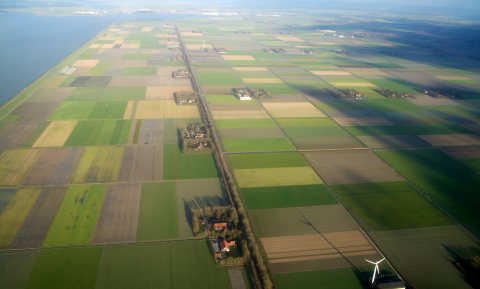
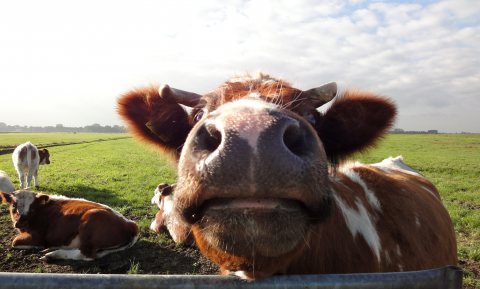
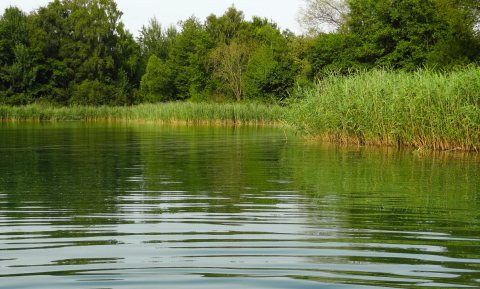
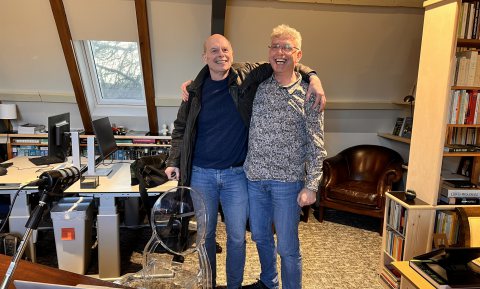
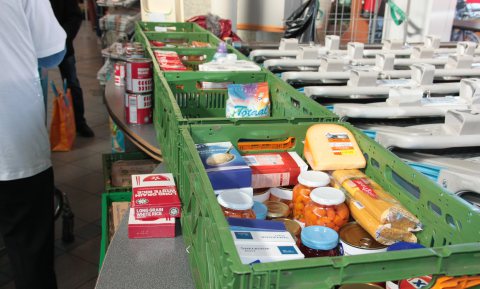
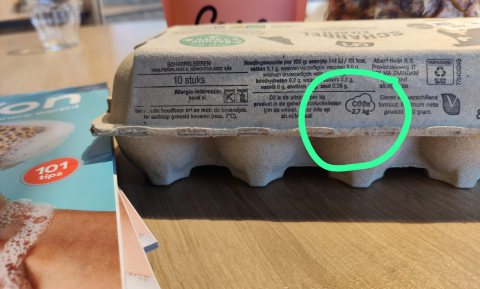
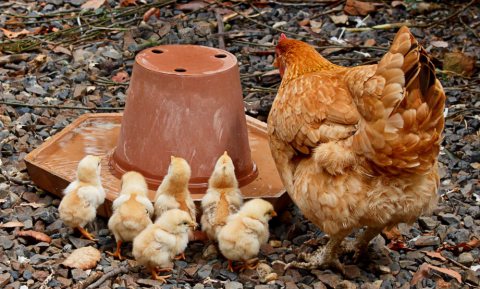
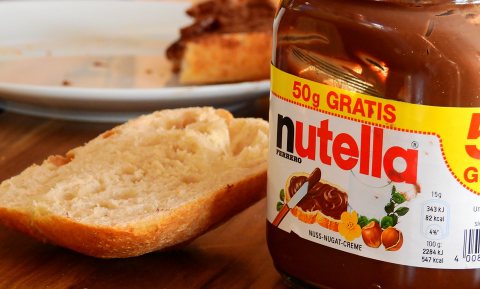
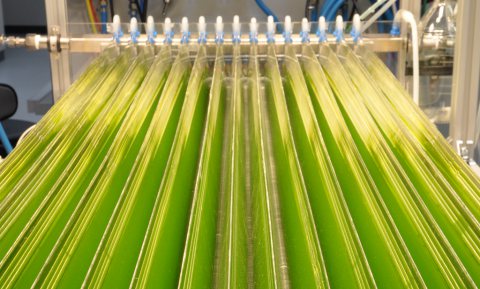
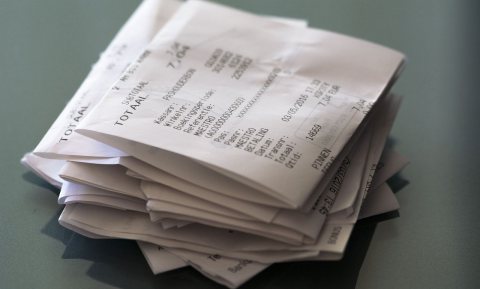
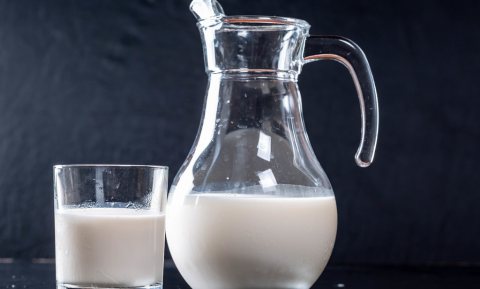
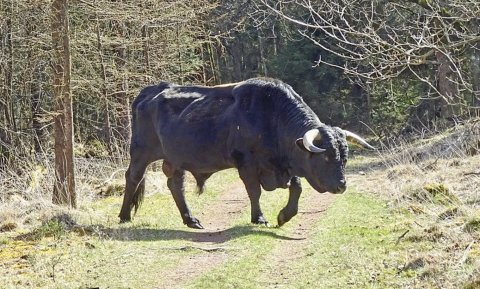
Wouter, mooi woord: 'vismesterij'. Sounds fishy, zou je bijna zeggen ;-)
Ik heb me laatst laten vertellen dat er rond de grote steden in ons land vroeger zgn. 'vetweiden' waren. Omdat we hier geen vleeskoeien hadden en er nog geen grootschalig vervoer op wielen mogelijk was, moesten de dieren op hun tocht hierheen zelf lopen vanuit vnl Noord-Duitsland en Denemarken. Na die vermoeiende en dus vermagerende tocht, werden ze weer gemest op 'grazige weiden'.
We houden het woord er maar in dus, want het past bij onze traditie!
1. Een mesterij (want een kwekerij kun je het eigenlijk niet noemen) van barramundi's is een maand geleden geopend in Groningen. Jonge visjes worden uit Australie overgevlogen.
2. Volgend jaar verschijnt bij Nijgh & Van Ditmar de vertaling van Hooked, gaat hier waarschijnlijk Beet heten. De schrijver heet vreemd genoeg Knecht, maar is een Amerikaan. Het is het spannendste en treurigste en toch hoopgevende boek over de onverantwoorde visserij op een diepzeevis in Antarctisch water. De vis waar het hierboven over gaat. Het is de vraag of het een zeebaarssoort is, in het boek wordt van een soort heek gesproken. Zoeken we wel uit. Sparen vast, voor dat boek!